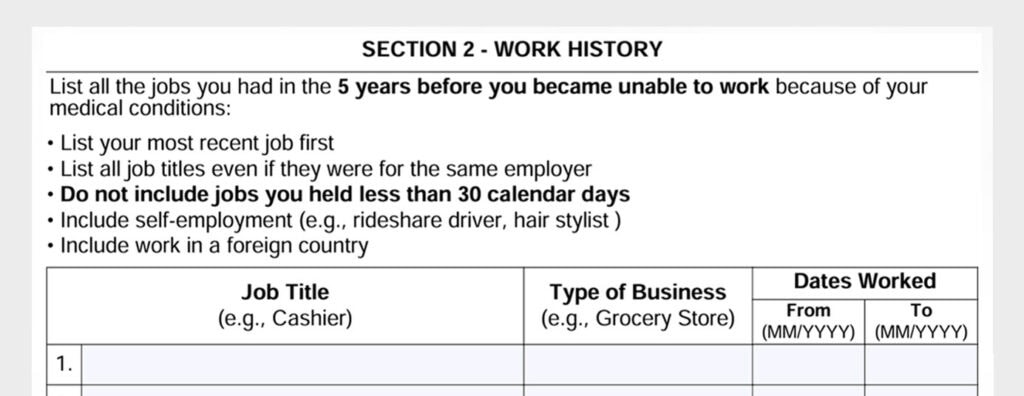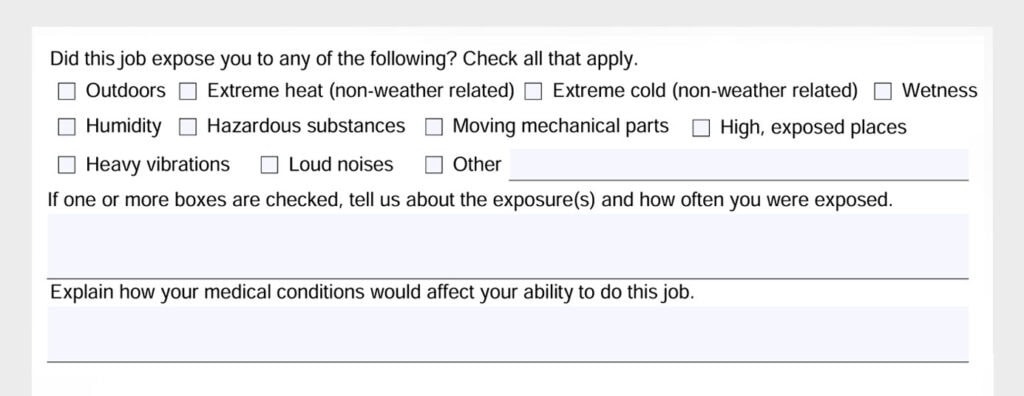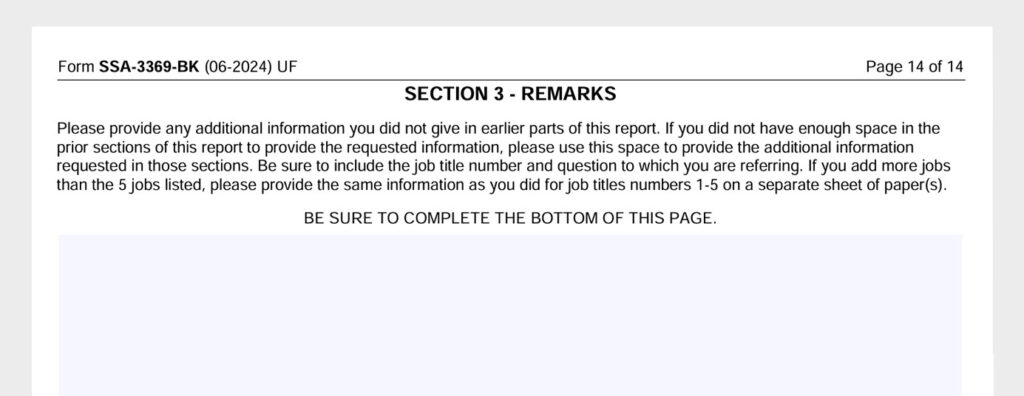How to complete a job history report

If you are applying for Social Security Disability Insurance (SSDI), the key part of applying is the Job History Report (SSA-3369). This form provides the Social Security Agency (SSA) with a detailed overview of your past work experience, which is used to assess whether your disability prevents you from conducting substantial paid activities. Let's break down the process of completing and submitting this basic report.
What is a Job History Report (SSA-3369)?
The Job History Report (SSA-3369) is a form that you must fill in in the SSDI application. It details your employment history over the past 5 years you were unable to work, including job titles, responsibilities and how your medical condition affects your ability to perform these jobs. It can help SSA determine whether you can still work despite your disability and whether you are eligible for SSDI benefits.
Steps to complete a job history report
Step 1: Collect your employment information. Before filling out SSA-3369, it is best to prepare your employment history list. You need to provide detailed information about the following information
- Employer name and contact information
- Employment dates (start and end dates) for each job
- Job title
- Detailed description of your job responsibilities
If you have held multiple roles in the same company, make sure to include all of them in your work history report.
Step 2: Complete the work history report. The SSA-3369 form will require information in several sections. Here is what you need to fill in:
- personal information. Your name, social security number, contact information and date of birth.
- General work history. You will list every job you have worked in the past 5 years. For each job, including:
- Employer's name and address
- Employment date (start and end)
- Title or position
- Description of your job responsibilities
- Hours worked per week
- The type of work you perform

For each position, you will be asked to explain:
- What tasks did you perform
- Whether these tasks involve sports activities (e.g., weightlifting, walking, standing)
- Required skill levels
- Is the job required a specific tool or a machine, and if so, which
The space provided to explain how your medical condition affects your work ability is limited, so be direct but brief in the answer.


The form will also require you to list any other jobs you have held in the past, including any positions you may have worked in when you were young or part-time. If you are unable to do your previous job due to a disability, the SSA may ask you if you have any transferable skills that can help you with other types of jobs. This allows them to assess whether you can perform other types of work despite your disability.
You also have the opportunity to offer this service if any additional information about your work history is related to your disability claim (such as unemployment period due to your condition).


Step 3: View and verify your information. After completing the form, review it carefully to ensure that all information is accurate and up-to-date. Check that job responsibilities are clearly described and that you provide clear information about what you will do when you hold the position.
If you are not sure about a specific section, feel free to ask a friend or family member to review it.
Step 4: Submit a work history report. You can submit the SSA-3369 form in the following ways:
- Online: If you are submitting an SSDI application online through SSA's website, you can fill out the work history report directly online. Log in to your SSA account and submit your application and related forms as directed.
- By email: If you do not apply online, you can download SSA-3369 from the SSA website, complete it manually, and then mail it to SSA Office to process your SSDI claim.
- personally: You can delete the complete form at your local SSA office.
Make sure to keep a copy of the form in your record, as SSA may take some time to process your application.
Step 5: Follow up on your application. Always follow up on your SSDI claim after submitting your work history report. SSA may contact you for more information or clarification, especially if your work history or persons with disabilities are confused.
You can check the claim status online through your SSA account or contact SSA directly. It is also a good idea to track any other forms or medical records that the SSA may need during the review process.
Tips for successful submission
- Treat it like a resume. You are showing SSA who you are. Be honest about your past work and what you expect to do your tasks. You should make sure that job requirements and responsibilities are explained accurately as needed.
- Detailed and specific: The clearer your description of job responsibilities, the easier it is for SSA to evaluate your claims. Look at each question literally and work honestly.
- Don't miss anything. Even if a job seems small or irrelevant, include it in your history if it happens within the last five years. The SSA will evaluate all details to make a decision.
- If needed, please seek help: If you are in trouble with the form, you can always ask the SSA's representative for guidance. In addition, many nonprofit organizations and legal aid services provide assistance to individuals applying for SSDI.
Ensure Michigan's disability lawyers have the best chance
Complete work history reports are an important part of your SSDI application and taking time to do it carefully can have a significant impact on the approval process. The more accurate you describe your work experience and responsibilities, the stronger your case will be and you can get SSDI benefits.
If you live with a person with a disability and are considering applying for an SSDI benefit, contact a Michigan Disability Attorney immediately to help you through the process. Contact us now by submitting the form online or by calling (800) 949-2900 for a free case assessment.



